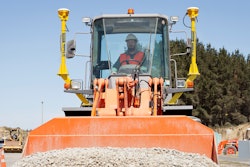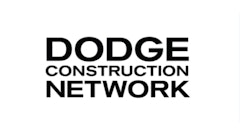
Despite a booming construction market, the industry has experienced unique challenges and has had to adapt quickly to a variety of sudden changes brought upon by the pandemic. Such challenges include global supply chain issues and a glaring shortage of skilled labor.
These hardships are being overcome by the help of technology, which can do everything from automated billing and streamlined business functions to accelerating the design process with 5G to bring diagrams and blueprints to ‘life’ through augmented and virtual reality technology.
At the small and midsize business level, a big driver of this future success is being fueled by the widespread adoption of new digital tools and technologies that not only enhance customer experience but create new business opportunities. Technology is being used by construction businesses to recruit skilled labor and enhance the customer experience.
 Construction companies are using automation to electronically streamline their workflow for job dispatch routing, job description and electronic point of sale.Verizon Business
Construction companies are using automation to electronically streamline their workflow for job dispatch routing, job description and electronic point of sale.Verizon Business
In a recent Verizon small business survey, nearly two in three decision makers (63%) at a variety of small and midsize businesses across the country said they have gone digital in 2021. That’s a 10% increase from the prior year. In addition, the survey showed rapid technology adoption growth since August 2020, with more small and midsized businesses having purchased and implemented high-capacity internet (52% vs. 27% in the previous survey) to help compensate for a shortage of workers.
Build Digital Connections with Skilled Labor
While many construction companies have already adopted some form of construction technologies to streamline their daily processes, most are being employed for the digital design phase and project management tasks of these businesses, including everything from 3D printing to digital collaboration tools.
Yet, there is an opportunity to use this technology to digitally connect with the highly skilled laborer required to keep construction projects on track. This will be critical given the Associated Builders and Contractors estimates construction businesses will need to hire 430,000 workers this year and 1 million more over the next two years in order to manage demand.
New AI applications can also optimize scheduling through algorithms to help employers gauge how large a team they need at various points to improve efficiency.
Cybersecurity a Rising Concern
While technology solutions have helped businesses in every vertical evolve and scale their businesses over the last few years, things like increased remote work and a shift toward digital operations have posed significant security risks for employees who aren’t yet versed in the practice of good cyber hygiene. This aligns with the 14th annual Data Breach Investigations Report (DBIR), an analysis of 29,207 security incidents, with 5,258 being confirmed breaches from 83 contributors across the globe. This marked a 33% year-on-year increase in breaches analyzed compared to 2020.
The combination of bad actors leveraging entries such as malware or hacking and user errors highlights the need for security to be ingrained across the organization. With more employees operating outside of the corporate network, providing appropriate training will be more important than ever before in helping companies reduce human error – which caused 17% of breaches according to the DBIR report.
Fortunately, this lesson is being learned. The survey found that 59% of small and midsized business owners said they will require multi-factor logins to access systems within the next year, while 56% were training employees on best cybersecurity practices to keep things safe – meaning small and midsized businesses across industries are preparing to use technology safely.
A Brighter Future Ahead
While small and midsize businesses are usually the last to bounce back after a financial crisis like the one we saw during COVID-19, advances in technology mean this time will be different. Already, we’re seeing examples of disruptive technological innovations becoming available to small and midsize businesses in a way that was never possible before.
For example, Verizon recently partnered with Mastercard on a 5G contactless payments system for consumers and small and midsize businesses. The alliance, which aims to yield innovations by 2023, enables businesses to use emerging payment technologies to:
- turn smartphones into cash registers,
- turn wearables like watches into payment devices,
- and facilitate touchless retail similar to Amazon Go stores.
Verizon has also continued to expand the availability of our 5G Business Internet since the onset of the pandemic, providing the connective backbone upon which businesses can run their operations. Construction companies across the country are leveraging Verizon Business Internet, a fixed wireless access option for reliable and secure broadband connectivity, to power remote jobsites and a remote workforce.
So, perhaps it’s unsurprising that despite these ongoing hurdles, the construction industry looks set to emerge from the pandemic stronger than ever, with a global market worth more than $8 trillion by 2030, according to the Global Construction Perspective and Oxford Economics. With technology to help small and midsize businesses build back, the future looks bright.
Mark Tina is vice president of business sales, Verizon Business.


















